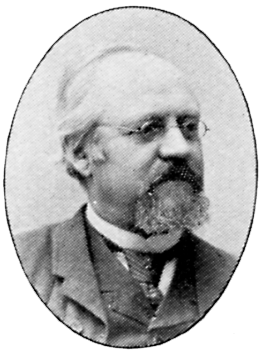
Anders Leonard Zorn was a Swedish artist. He attained international success as a painter, sculptor, and etching artist. Among Zorn's portrait subjects include King Oscar II of Sweden and three American Presidents: Grover Cleveland, William H. Taft, and Theodore Roosevelt. At the end of his life, he established the Swedish literary Bellman Prize in 1920.

Albert Gustaf Aristides Edelfelt was a Finnish painter noted for his naturalistic style and Realist approach to art. He lived in the Grand Duchy of Finland and made Finnish culture visible abroad, before Finland gained full independence. He was considered the greatest Finnish artist of the second half of 19th and the first half of the 20th centuries, and one of the most prominent contributors to the Golden Age of Finnish Art.

The Royal Academy of Turku or the Royal Academy of Åbo was the first university in Finland, and the only Finnish university that was founded when the country still was a part of Sweden. It was founded in 1640. In 1809, after Finland became a Grand Duchy under the suzerainty of the Russian Tsar, it was renamed the Imperial Academy of Turku. In 1828, after the Great Fire of Turku, the institution was moved to Helsinki, in line with the relocation of the Grand Duchy's capital. It was finally renamed the University of Helsinki when Finland became a sovereign nation-state in 1917.

Blanche of Namur was Queen of Norway and Sweden as the wife of King Magnus VII / IV.

The Cudgel War was a 1596–1597 peasant uprising in Finland, which was then part of the Kingdom of Sweden. The name of the uprising derives from the fact that the peasants armed themselves with various blunt weapons, such as cudgels, flails, and maces, since they were seen as the most efficient weapons against their heavily-armoured enemies. The yeomen also had swords, some firearms, and two cannons at their disposal. Their opponents, the troops of Clas Eriksson Fleming, were professional, heavily-armed and armoured men-at-arms.

The Tales of Ensign Stål is an epic poem written in Swedish by the Finland-Swedish author Johan Ludvig Runeberg, the national poet of Finland. It was published in two cycles, in 1848 and in 1860. The poem describes the events of the Finnish War (1808–1809) in which Sweden lost its eastern territories; these would become incorporated into the Russian Empire as the Grand Duchy of Finland.

Pasteur's portrait by Edelfelt is the best-known portrait of the French chemist Louis Pasteur. Painted by Albert Edelfelt (1854–1905) in 1885 the painting shows Pasteur in his laboratory at the rue d'Ulm, surrounded by his experimental apparatus, the innovative laboratory glassware used in the experimental methods, developed by him on the field of bacteriology in the late 19th century. Pasteur is regarded as one of the main founders of bacteriology, and he is popularly known as the "father of microbiology".
Queen Blanche may refer to:

Pascal-Adolphe-Jean Dagnan-Bouveret was a French painter, one of the leading members of the naturalist school.

Gunnar Fredrik Berndtson was a painter from the Grand Duchy of Finland who was noted for his attention to realistic detail.

Pietro Købke Krohn was a Danish painter, illustrator, theatre director and museum director. He is remembered above all for his work together with Otto Haslund, illustrating Johan Krohn's book Peters Jul

Amalia Aurora Adelaïde Leuhusen, née Valerius, was a Swedish baroness, painter and concert singer. She was a teacher and benefactor of the famous Swedish opera singer Christina Nilsson, whom she introduced to Paris, where Nilsson started her international career. She was a member of the Royal Swedish Academy of Music. During her lifetime, she was famous throughout Sweden and known for her work outside of her native country.

Berndt Adolf Lindholm was a Finnish landscape painter. He is usually associated with the Düsseldorf School, but his work also displays early Impressionist elements. He specialized in coastal scenes.

Luxembourg Gardens, Paris is an oil painting completed in 1887 by the Finnish artist Albert Edelfelt depicting a scene in the Jardin du Luxembourg in Paris, France. The painting has become a kind of symbol of Edelfelt and the whole of Finnish art, at a time when Paris was the center of the art world. It is one of Edelfelt's larger paintings and a major en plein air painting.

Ruokolahti Church is the Lutheran church in the town centre of Ruokolahti, in south-eastern Finland, and the main church of the Ruokolahti parish.

The March of the Björneborg Regiment is a gouache painting by Finnish painter Albert Edelfelt completed in 1892.

Burnt village is an oil-on-canvas painting by Finnish painter Albert Edelfelt completed in 1879.

Kaukola Ridge at Sunset is a painting by Finnish painter Albert Edelfelt completed in 1890.

Conveying the Child's Coffin (A Child's Funeral) is a painting by Finnish painter Albert Edelfelt completed in 1879.

Boys Playing on the Shore is a painting by Finnish painter Albert Edelfelt completed in 1884.


















